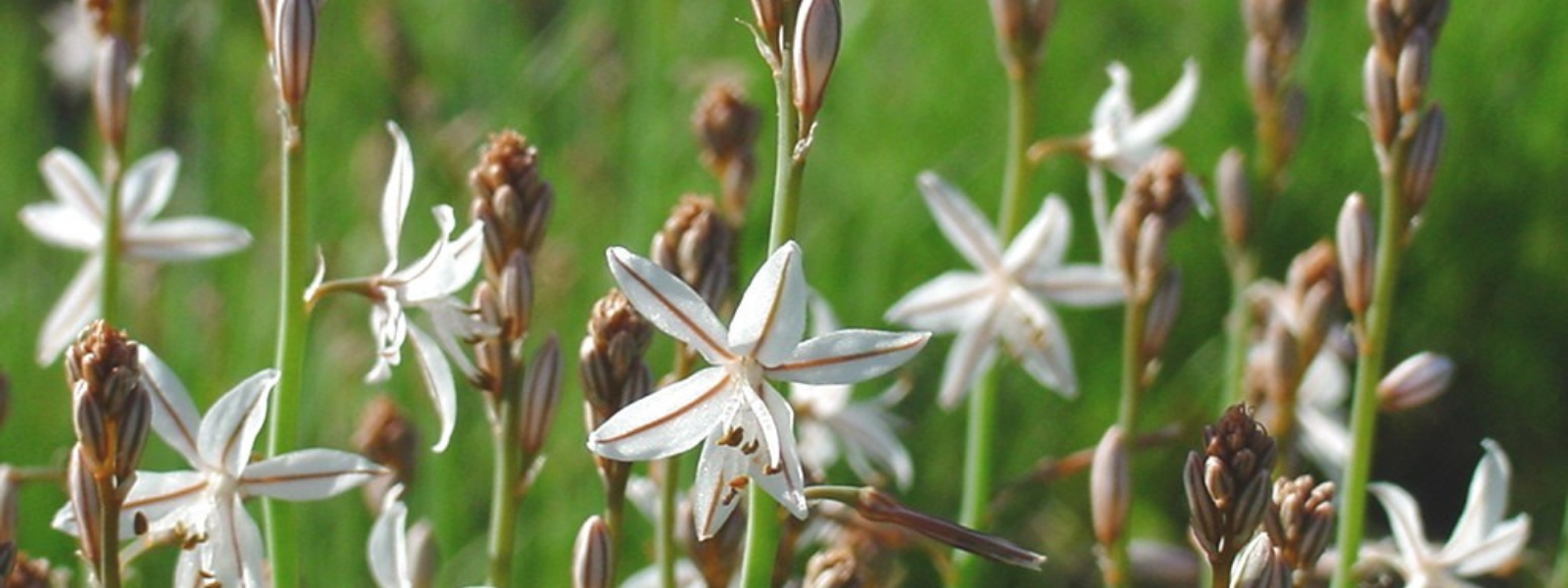
Common Name
Onion Weed, Sphodel, Hollow-stemmed Asphodel, Wild Onion Three-cornered Leek, Three-cornered Garlic, or Wild Onion
Scientific Name
Asphodelus fistulosus
Family
Asphodelaceae
Lifecycle
Perennial
Seasons of Growth
Year-round
Key Distinguishing Feature
Herb with slender, hollow leaves and onion-scented bulbs
• Growth Form: Onion Weed is a small herbaceous plant that reaches heights of about 20-40 centimetres (8-16 inches). It emerges from a small bulb and has slender, three-cornered stems.
• Leaves: The leaves are strap-like and can be bright green. They are typically arranged in a basal rosette.
• Flowers: Onion Weed produces small, star-shaped white flowers that are borne in umbels (umbrella-like clusters) at the top of the stems. The flowers have a characteristic onion or garlic odour.
• Bulbs: Underground, Onion Weed forms small bulbs, which are often found in clusters.
• Habitat: Onion Weed is commonly found in a variety of habitats, including woodlands, grasslands, gardens, and disturbed areas. It is native to the Mediterranean region but has naturalized in other regions, including North America, Australia, and New Zealand.
Ecological Impact:
• Onion Weed is considered invasive in some regions where it has naturalized. It can form dense stands and outcompete native vegetation.
Control Methods:
• Control of Onion Weed often involves a combination of mechanical, chemical, and cultural methods.
• Mechanical methods include hand-pulling or digging to remove the bulbs and entire plants.
• Herbicides may be used for control, but care must be taken to use them safely and effectively, following local regulations.
• Preventing the establishment of Onion Weed through early detection and removal is important.
Onion Weed is a challenging invasive plant that requires active management to prevent its spread and protect native ecosystems. Local agricultural and environmental agencies often provide guidance on the best control practices for this invasive species.
Key Products for Control:
-
Indigo Rapid Fire 800 - Glyphosate (present as acid and ammonium salt)
- Indigo Duke 100WG - Iodosulfuron methyl sodium




